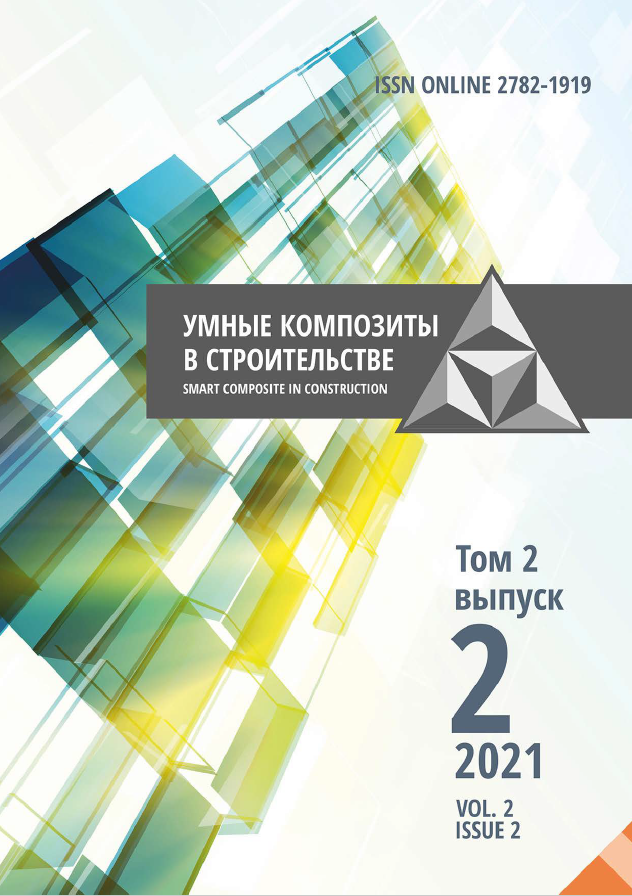Moscow, Russian Federation
The paper considers classes of nonporous, capillary-porous and colloidal capillary-porous materials as drying objects used in construction. The specific aspects of internal mass transfer in them are analyzed. It is noted that the main coefficient of internal mass transfer is the coefficient of mass conductivity (moisture diffusion coefficient). It is noted that during drying, it significantly depends not only on the temperature, but also on the moisture content of the material. The drying dynamics of materials using this coefficient should be calculated by taking into account these dependencies. The lack of data on the mass conductivity coefficient makes it difficult to apply mathematical methods for calculating the drying kinetics based on solutions of the differential equations of mass and heat conductivity. It is indicated that the development of a zonal method for determining the concentration dependence of this coefficient significantly facilitated the accumulation of data on it. The paper gives examples of experimental data on the mass conductivity coefficient for drying materials of different classes. It also discusses the issues of kinetic calculation of the drying process of materials on the basis of theoretical mathematical models-analytical and numerical, involving the use of data on the thermophysical characteristics of materials. It is indicated that mathematical methods have now come to the fore in connection with the general development of the drying theory, the accumulation of data on the mass conductivity coefficient, the ubiquity of personal computers and the development of efficient computing systems. To calculate the drying kinetics of materials with the correct geometric shape, the zonal method is recommended, based on solutions of linear differential equations of mass and heat conductivity, applicable in narrow ranges of changes in the moisture content of the material-as easy to use and providing sufficient accuracy for engineering purposes.
drying, classes of dried materials, mass conductivity, kinetic calculation
1. Rudobashta S.P. Mass transfer in solid phase systems. Moscow: Khimija. 1980. 248 p. (in Russian).
2. Lykov A.V. Drying theory. Ed. 2-rd. ref. and add. Moscow: Energy. 1968. 422 p. (in Russian).
3. Kast W., Rudobashta S.P., Planovski A.N. Trocknung von Polyamid. Chemie-Ing.-Techn. 1976. 48. Jahrgang. Heft 7. P. 657.
4. Rudobashta S.P. Polymeric materials drying. Proc. International Symposium on Manufacturing and Materials Processing. August 27-31. 1990. V. 1. Dubrovnik. Yugoslavia. 1990. P. 661-678.
5. Rudobashta S.P., Dmitriev V.M. Kinetics and apparatustechnological design of convective drying of dispersed polymeric materials. Inzh.-Phys. Journal. 2005. V. 78. N 3. P. 51- 60 (in Russian).
6. Rudobashta S.P., Kartashov E.M. Chemical technology: diffusion processes. In 2. Part 2. 3-rd ed. trans. and add. Moscow. 2018. 296 p. (in Russian).
7. Rudobashta S.P., Kartashov E.M. Diffusion in chemical engineering processes. 2-rd ed. trans. and add. Moscow: Khimija. 2010. 479 p. (in Russian).
8. Klimov A.M., Rudobashta S.P., Teplyakov Yu. A., Nechaev V.M. Kinetic patterns during drying of polymers with a changing structure. Bulletin of the Tambov University. Series: Natural and technical sciences. 2011. V. 16. N 6-1. P. 1474-1477 (in Russian).
9. Dmitriev V.M., Rudobashta S.P., Kormiltsin G. S., Borobyov A.M. Installation for determining the coefficients of moisture diffusion in granular materials. Bulletin of the Tambov University. Series: Natural and technical sciences. 2001. V. 6. N 4. P. 424-427 (in Russian).
10. Ochnev E.N., Rudobashta S.P., Planovski A.N., Dmitriev V.M. Zonal method for determining the dependence of the mass conductivity coefficient on concentration. Theor. Fund. of Chem. Technol. 1975. V. IX. N 4. P. 491-495 (in Russian).
11. Borislavsky V.T., Gorina S.S., Olshansky D.Ya., Ochnev E.N., Rudobashta S.P. USSR Inventors certificate 423765. 1974 (in Russian).
12. Kormiltsin G. S., Planovski A.N., Rudobashta S.P. Comparison of mass conductivity coefficients during drying in stationary and non-stationary conditions. Theor. Fund. of Chem. Technol. 1971. V.5. N 4. P. 593-595 (in Russian).
13. Krischer O. Die wissenschaftlichen Grundlagen der Trocknungstechnik. Berlin-Göttingen-Heidelberg: Springer-Verlag. 1956.
14. Churaev N.V. The mechanism of moisture transfer in capillary-porous bodies. Reports Academy of Sciences of the USSR. 1963. V. 148. N 6. P. 1361-1364 (in Russian).
15. Sergievsky P.S. Calculation of the processes of drying and moistening wood. M .: State Legbumizdat. 1952 (in Russian).
16. Rudobashta S.P., Planovski A.N., Ochnev E.N. Zonal method for calculating continuous mass transfer apparatus for systems with a solid phase. Theor. Fund. of Chem. Technol. 1974. V. 8. N 1. P. 22-29 (in Russian).
17. Rudobashta S.P., Planovski A.N., Dolgunin V.N. Zonal calculation of the kinetics of drying of granular material in a dense blown layer based on solutions of the equations of mass and heat transfer. Theor. Fund. of Chem. Technol. 1978. V. 12. N 2. P. 173-183 (in Russian).
18. Fedosov S.V., Kotlov V.G. Dynamics of heat and mass transfer in wooden structures connected by metal fasteners. Drying Technology. International journal. 2019. P. 1-8 (in Russian).







